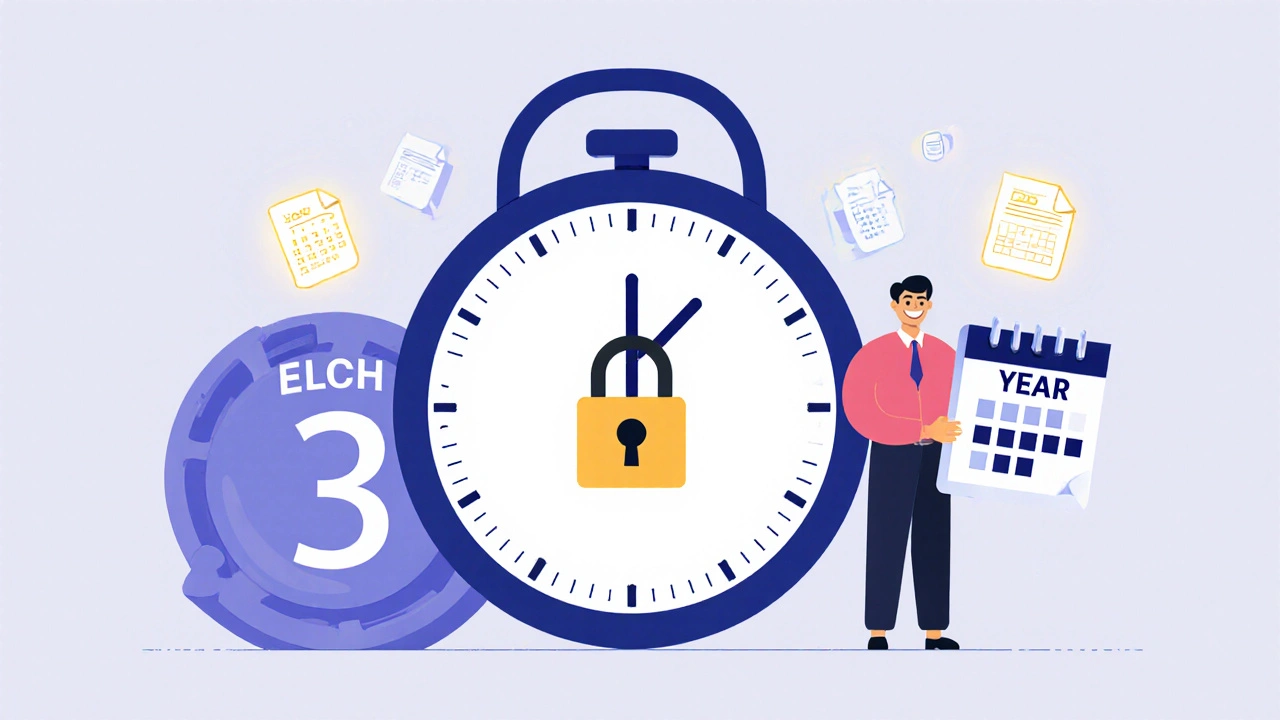How to Switch Between Mutual Fund Schemes in India Without Triggering Tax
Switching between mutual fund schemes in India doesn’t have to mean paying taxes-if you know how to do it right. Many investors think switching means selling one fund and buying another, which triggers capital gains tax. But there’s a legal, straightforward way to move your money between schemes without triggering tax liability. This isn’t a loophole. It’s a feature built into the system by AMCs and SEBI to help investors adjust their portfolios without penalty.
What Happens When You Switch Mutual Funds?
When you sell a mutual fund, you realize a gain or loss. If you held it for less than a year, that’s a short-term capital gain taxed at your income tax slab rate. If you held it for more than a year, equity funds are taxed at 10% on gains above ₹1 lakh. Debt funds have different rules-short-term gains are taxed at your slab rate, long-term at 20% with indexation. But here’s the catch: you don’t have to sell to switch.
Most mutual fund houses offer a facility called switch-not redemption. A switch lets you transfer units from one scheme to another within the same fund house. You’re not cashing out. You’re moving your money from one portfolio to another. That’s key. No sale = no capital gains tax.
How to Switch Without Paying Tax
Here’s how to do it step by step:
- Log in to your mutual fund account via the AMC’s website or app (like HDFC Mutual Fund, ICICI Prudential, or Axis Mutual Fund).
- Go to the Switch section. It’s usually under Transactions or Portfolio.
- Select the scheme you want to switch from.
- Select the scheme you want to switch to. It must be under the same fund house.
- Enter the number of units or the amount you want to transfer.
- Confirm the switch. You’ll get a confirmation number and email.
That’s it. The units are redeemed from the source scheme and units of the target scheme are allotted on the same day. No cash touches your bank account. No tax event is triggered.
Limitations You Must Know
This only works within the same fund house. You can’t switch from a fund managed by SBI Mutual Fund to one managed by Kotak Mutual Fund using this method. For cross-fund-house transfers, you’ll have to redeem and reinvest-and that triggers tax.
Also, you can’t switch between different fund types without consequences. For example:
- Switching from an equity fund to a debt fund? Still a taxable event if the equity fund has appreciated. Wait-no. If you use the switch feature, it’s still a transfer within the same AMC, so no tax. But here’s the nuance: SEBI treats this as a redemption and reinvestment for tax purposes, but only if the schemes are of different asset classes. That’s a common misunderstanding.
Actually, the tax treatment depends on the type of fund you’re switching from and to. If you switch from an equity fund to another equity fund within the same AMC, no tax. If you switch from an equity fund to a debt fund, even within the same AMC, the tax authorities treat it as redemption of equity and purchase of debt. So yes-tax applies.
Let’s be clear: switching between equity schemes within the same AMC is tax-free. Switching from equity to debt, or debt to equity, is taxable. The switch facility doesn’t override tax rules-it just avoids the cash-out step. Tax is still due if the asset class changes.
What About Direct Plans?
Many investors want to move from regular plans to direct plans to save on expense ratios. Direct plans have lower fees because you don’t pay commissions to advisors. But you can’t directly switch from a regular plan to a direct plan within the same AMC. SEBI doesn’t allow it. You have to redeem the regular plan and reinvest in the direct plan. That triggers capital gains tax.
So how do you avoid tax when moving to direct plans? You can’t-not without paying. But here’s a workaround: if you’re in a growth plan and want to move to direct, wait until your holding period crosses one year. Then, redeem just enough to cover your tax liability. For example, if you have ₹5 lakh in gains and your tax slab is 20%, you can redeem ₹1 lakh in gains (tax = ₹10,000) and reinvest ₹4.9 lakh in the direct plan. That’s not ideal, but it’s better than paying tax on the full amount.

Switching SIPs: A Common Mistake
People often confuse switching schemes with changing SIPs. If you’re investing ₹5,000/month in a fund and want to move that SIP to another fund, you don’t switch the existing units-you stop the old SIP and start a new one. The units you already own stay where they are. You can switch those units later using the switch feature if they’re in the same AMC.
But if you stop your SIP and restart in another fund, your existing holdings don’t move. So if you want to consolidate, you need to manually switch the units after stopping the SIP.
When Should You Switch?
Switching makes sense in three scenarios:
- You’re rebalancing your portfolio-moving from aggressive to conservative within equity funds.
- A fund’s performance has consistently lagged its category for 2+ years.
- You want to shift from a load fund to a direct fund within the same AMC (but only if both are equity funds).
Don’t switch just because the market dipped. Don’t switch because a friend recommended another fund. Track performance over 3-year rolling returns. Use platforms like Value Research or Morningstar to compare. A fund that underperformed last year might outperform next year.
What About Tax-Saving Funds (ELSS)?
ELSS funds have a 3-year lock-in. You can’t switch them out before 3 years. Even if you try to use the switch feature, the AMC will block it until the lock-in period ends. After 3 years, you can switch to another equity fund within the same AMC without tax-same rules apply.

Pro Tips to Avoid Mistakes
- Always check the fund house’s switch policy. Some AMCs charge a switch fee (usually ₹100-₹200 per transaction).
- Switches happen at the day’s NAV. Don’t expect same-day execution if you switch after 3 PM.
- Keep records. Even though no tax is due on intra-AMC equity-to-equity switches, keep the confirmation slip. You may need it during tax filing.
- Use the switch feature only for equity-to-equity transfers. Anything else? Be ready to pay tax.
- Never assume a switch is tax-free. Always confirm the asset class of both schemes.
What If You Switch Across Fund Houses?
If you want to move from HDFC Mutual Fund to ICICI Prudential, you have to redeem. That means:
- Redeem units from HDFC → triggers capital gains tax.
- Wait for money to hit your bank account (2-3 days).
- Reinvest in ICICI Prudential.
This is unavoidable. But you can minimize the tax hit. Redeem only the portion that’s in your long-term capital gains threshold. For example, if you have ₹1.2 lakh in gains and the ₹1 lakh exemption applies, redeem only ₹1 lakh of gains. Keep the rest invested. Then reinvest the ₹1 lakh in the new fund. You’ll pay tax on ₹0 (since ₹1 lakh is exempt), and keep the rest growing tax-free.
Final Rule: Know Your Asset Class
The only thing that matters is whether you’re switching within the same asset class. Equity to equity? Tax-free if same AMC. Equity to debt? Taxable. Debt to debt? Taxable if held less than 3 years. Debt to equity? Taxable.
There’s no magic button. No hidden trick. Just clear rules and smart timing. If you’re switching for better returns, make sure you’re not paying more in taxes than you’re saving in fees. Use a simple calculator: if your expense ratio drops by 0.8% but you pay ₹15,000 in tax, you’ve lost money.
Switching mutual funds without triggering tax isn’t about finding loopholes. It’s about understanding the system. Use the switch feature the way it was designed-for portfolio adjustments, not tax avoidance. And always, always check the asset class before you click confirm.
Can I switch from a regular plan to a direct plan without paying tax?
No. SEBI doesn’t allow direct switches between regular and direct plans, even within the same AMC. You must redeem the regular plan and reinvest in the direct plan. This triggers capital gains tax if the fund has appreciated. To minimize tax, wait until your holding period exceeds one year (for equity) or three years (for debt), then redeem only the amount you need to reinvest.
Is switching between two equity mutual funds tax-free?
Yes-if both funds are managed by the same AMC and you’re switching within the equity category. For example, moving from HDFC Large Cap Fund to HDFC Mid-Cap Opportunities Fund. No cash outflow, no redemption, no tax. But if you switch from an equity fund to a debt fund-even within the same AMC-it’s treated as a redemption and triggers capital gains tax.
What if I switch after 1 year? Do I still pay tax?
If you switch between two equity funds within the same AMC after 1 year, you still don’t pay tax. The holding period doesn’t matter for the switch itself-it only matters if you’re redeeming. But if you switch from equity to debt, you pay tax on long-term capital gains (10% above ₹1 lakh), regardless of how long you held the original fund. The switch doesn’t erase the tax event-it just changes how it’s processed.
Can I switch ELSS funds before 3 years?
No. ELSS funds have a mandatory 3-year lock-in period from the date of each SIP installment. You cannot switch, redeem, or transfer any units until the lock-in expires. Even if you use the switch feature, the AMC will block the transaction. After 3 years, you can switch to another equity fund within the same AMC without tax.
Do I need to report a switch on my ITR?
Yes-if the switch involves a change in asset class (equity to debt, or vice versa), you must report the capital gain or loss in your ITR under Schedule CG. If you switch between two equity funds within the same AMC, you don’t need to report it because no capital gain is realized. But keep your switch confirmation slips for 6 years in case of an audit.





